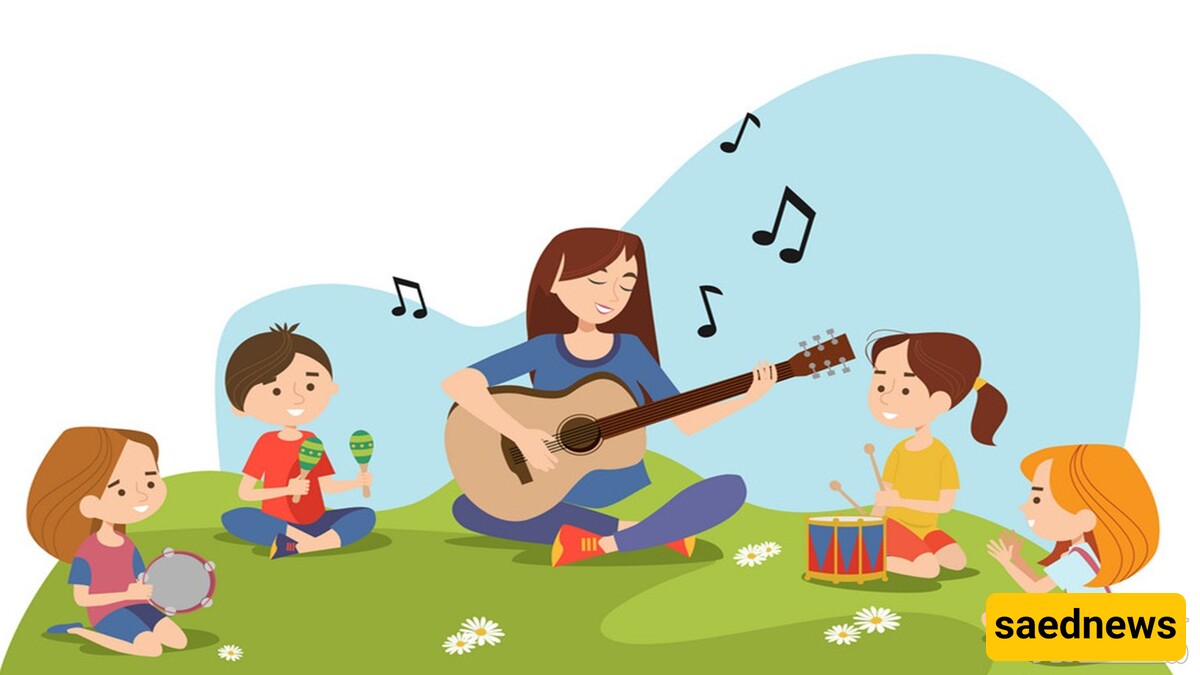Teaching English from scratch using poetry and music is an excellent strategy for helping children become bilingual quickly. In this article, we will explore the importance of poetry and music in learning English.

Simple songs are an inherent feature of most cultures. From the moment young children start speaking, many of them instinctively enjoy experimenting with sounds and playing with them. They often have an innate ability and tendency to imitate sounds and extract specific language rhythms from songs. Learning a particular language through a song and repeating it is another form of play for young children. They learn songs unconsciously and effortlessly.
The information they gain while singing helps them decode the phonetic components of words. However, the role of linguistic play with songs in early language learning is often underestimated and considered

Memorization and Recitation Boost Confidence
When children learn English through poetry, they can express themselves more easily and with less cognitive strain. This increases their confidence. Children love to engage with English immediately and dislike being unable to express themselves. Songs and poetry provide an opportunity for them to learn many English words quickly from the start.
Poetry Helps Retain Lessons
Learning through poetry ensures that lessons are not forgotten. When vocabulary and phrases are learned in poetic form, they tend to stay in memory longer.
Poetry Evokes Emotions
Poems are often associated with joy, and anything learned with happiness is retained more effectively.
Poetry is a Great Tool for Teaching Vocabulary and Grammar
Using poetry, a large number of new words can be taught at once. It also familiarizes children with the grammar and structure of the target language.
Poetry Encourages Play with Language
Songs and poems allow children to play with words and even change their order, helping them learn how to use language freely. By playing with short poems, children explore the structure of the English language and understand how it works. Through songs, they also learn the relationship between the 44 sounds of English and its 26 letters.
Poetry Enhances All Four Language Skills
Poetry helps strengthen speaking, listening, reading, and writing skills. Listening to a poem enhances listening skills, reciting it improves speaking, reading it boosts reading skills, and writing it develops writing skills.
Poetry and Music Can Be Taken Anywhere
Poems and songs can be used anytime and anywhere, filling leisure time with joyful activities. They require no special equipment or preparation.
Poetry is Fluid and Diverse
The smooth and rhythmic structure of poetry makes it ideal for language teaching. English offers a vast variety of enjoyable poems for children.
Poetry Helps Teach Different Cultures
Language learning is intertwined with cultural learning. Through poetry, children can learn about the culture, customs, and traditions of the second language.
Read the Poem Aloud
Recite the poem with correct pronunciation while the child listens. Set the context by using visual aids, such as writing numbers on colored paper if the poem is about counting. If unsure about pronunciation, play an audio recording.
Teach New Words First
Introduce unfamiliar words using toys or drawings. Minimize the use of the child's native language for better results. For older kids, ask them to check new words in a dictionary.
Discuss the Poem
Ask questions about the poem’s theme or emotions.
Summarize Long Poems
For complex poems, ask children to summarize in simple English. In early stages, do not correct their grammar mistakes.
Ask Questions About the Poem
For example, ask them to describe the main character in one word.
Choose Age-Appropriate Poems
Use simple poems for beginners and gradually introduce more complex ones.
Use Gestures and Actions
Accompany the poem with body movements, such as pointing to body parts while reciting a poem about them.
Record the Child’s Voice
Recording their recitation can be exciting and help them identify mistakes, boosting confidence.
Act Out Poem Dialogues
If a poem includes dialogue, act out the roles with the child to make learning more interactive.
Set a Schedule
Allocate specific times for poetry-based learning. Younger children can listen to English music or cartoons for several hours a day.
Use Animated Cartoons
Cartoons with poetic songs make learning more engaging.
Although the internet provides access to numerous English songs, selecting age-appropriate and educational ones can be challenging. Parents should plan to introduce one to three new songs per week, depending on the child’s learning pace and interest.
Key Considerations When Selecting Poems and Songs:
Choose materials that match the child’s language level.
Ensure cultural alignment with family values.
Consider the child’s interests.
Select familiar songs if possible.
Personalize songs by inserting family members’ names.
Use songs that relate to daily activities.
Popular Song Categories for Language Learning:
Greeting songs
Action and fingerplay songs
Play songs
Traditional rhymes
Thematic songs
Parents can use expressive voices, facial expressions, and body language to capture children’s attention. A dramatic introduction to a new song can make it more appealing. When children become familiar with a song, they begin to understand emotions conveyed through voice tone.
Initially, it’s best to read the lyrics normally before introducing the melody. Some children struggle to transition from singing to speaking in the target language.
Songs are built from set phrases rather than individual words. Children often learn these phrases without noticing small grammatical elements like "the" or "for."
Illustrations in songbooks help with comprehension. If none are available, parents can use drawings or real objects. Any translation should be whispered once, followed by repeating the English word.
Although adults may find repetition boring, it helps children refine their pronunciation and reinforce learning, boosting their confidence.
For special occasions like birthdays, children can prepare performances featuring two or three songs. Singing in groups or alone helps build confidence.
Using MP3 players to record and playback songs allows children to analyze their pronunciation and make corrections. Most children will want to re-record until they are satisfied with their pronunciation.
Research shows that reading familiar songs out loud is crucial in learning to read fluently. Pointing to words while singing helps children recognize them.
A popular activity is finding rhyming words, such as "four," "door," "more," "floor," and "saw." Parents and teachers should recognize the importance of this natural learning step.
Children who learn songs in a second language gain linguistic confidence, better pronunciation, and a deeper understanding of the language. Using poetry and music is a creative, fun, and effective method to teach English and other languages to children.

